Most Dog-Friendly National Parks in the U.S.
If you’d like to take your four-legged friend with you on a national parks road trip, you’ll certainly be interested in learning about the best national parks for dogs.
While most national parks in America do allow dogs, it’s important to realize that there are lots of restrictions in many of them.
More often than not, your dog is only allowed in campgrounds, on and near paved roads, and/or in some accommodations. Only in developed areas, in other words.
Some parks, however, also welcome dogs on hiking trails. Below you’ll find the most dog-friendly national parks in the system, including several smaller parks, as well as a couple of the big ones.
11 Most Dog-Friendly National Parks in the U.S.
This blog post about the most dog-friendly national parks contains affiliate links. You can read more about our Terms of Use / Disclosure here.
Acadia National Park, Maine
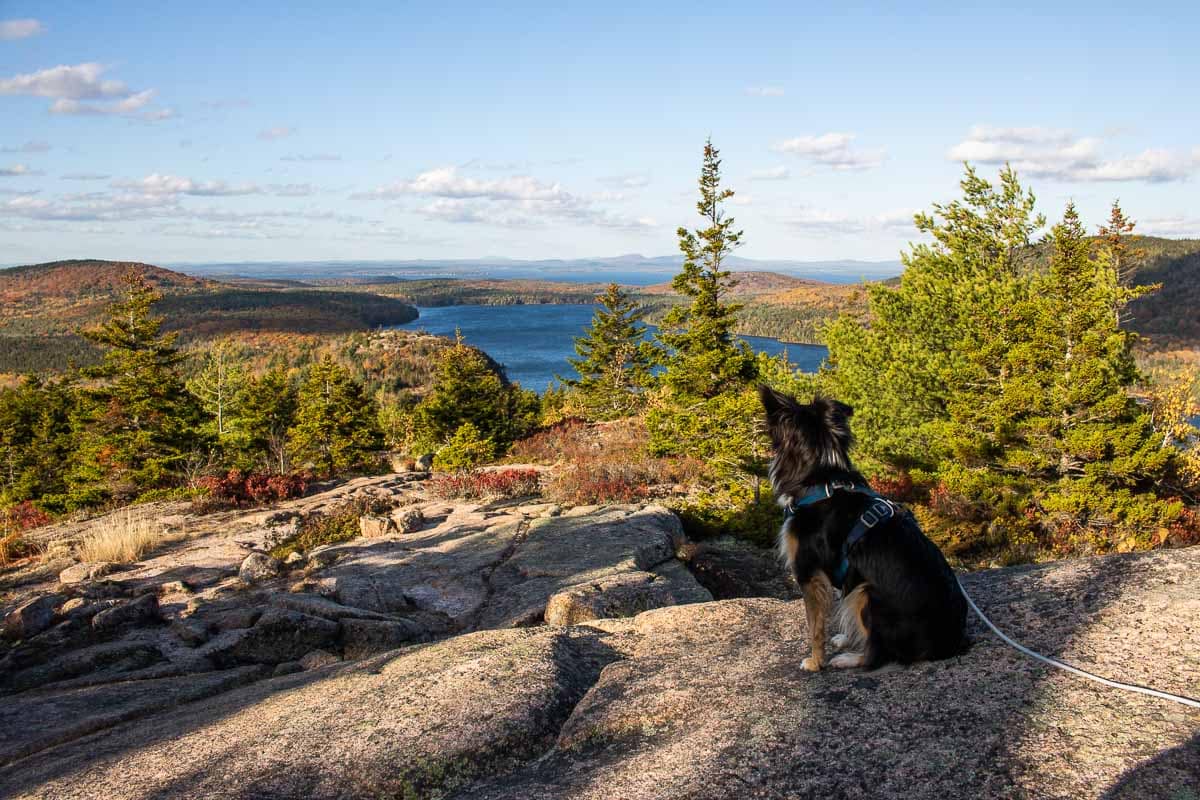
Maine’s Acadia National Park is one of the best national parks for dogs for a few reasons. Although it’s among the smaller national parks in America, much of it is open to both humans and their pets.
One of Acadia’s main attractions is its historic carriage roads on Mount Desert Island, which now serve as hiking and cycling trails. No fewer than 45 miles of carriage roads can be explored with dogs. Additionally, you can take your dog on 100 miles of hiking trails throughout the park.
Most, but not all, campgrounds are also dog-friendly. In nearby Bar Harbor, you’ll find plenty of pet-friendly accommodation options, too.
Note, however, that the most challenging hiking trails in Acadia National Park, such as the Precipice Trail and Beehive Trail, are off limits to pets.
On trails that are open to dogs, you must keep it on a leash that’s no longer than 6 feet. That’s a universal rule in all national parks where dogs are allowed.
Learn more about the Acadia National Park dog rules here.
Congaree National Park, South Carolina
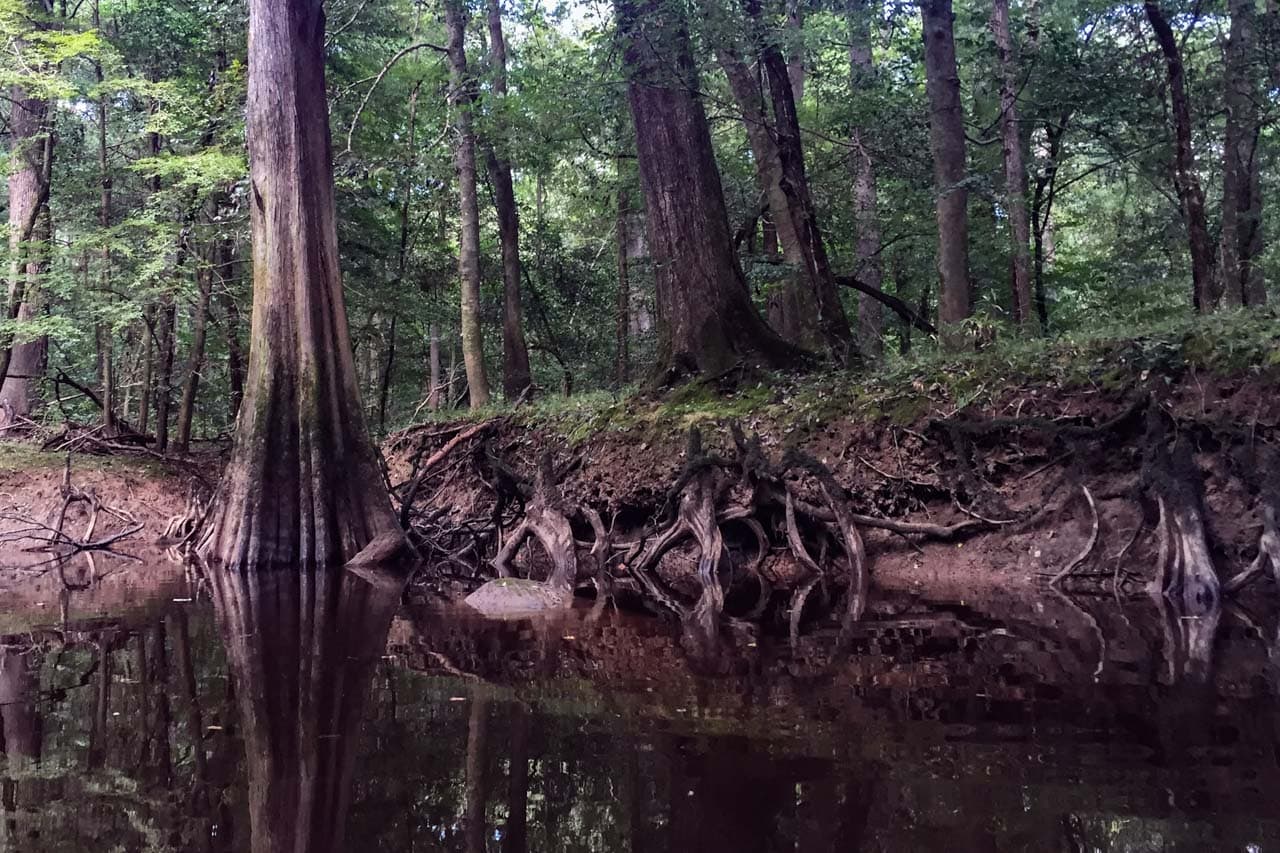
Another amazingly dog-friendly national park is in South Carolina. In Congaree National Park, dogs are welcome basically anywhere. You can bring your dog to all campgrounds and on all trails in the park, including the boardwalk.
If you’re looking for a dog-friendly camping and hiking destination in the South, Congaree National Park with its old-growth bottomland hardwood forest, floodplains, wetlands and wildlife is a fantastic option.
Learn more about the Congaree National Park dog rules here.
Mammoth Cave National Park, Kentucky
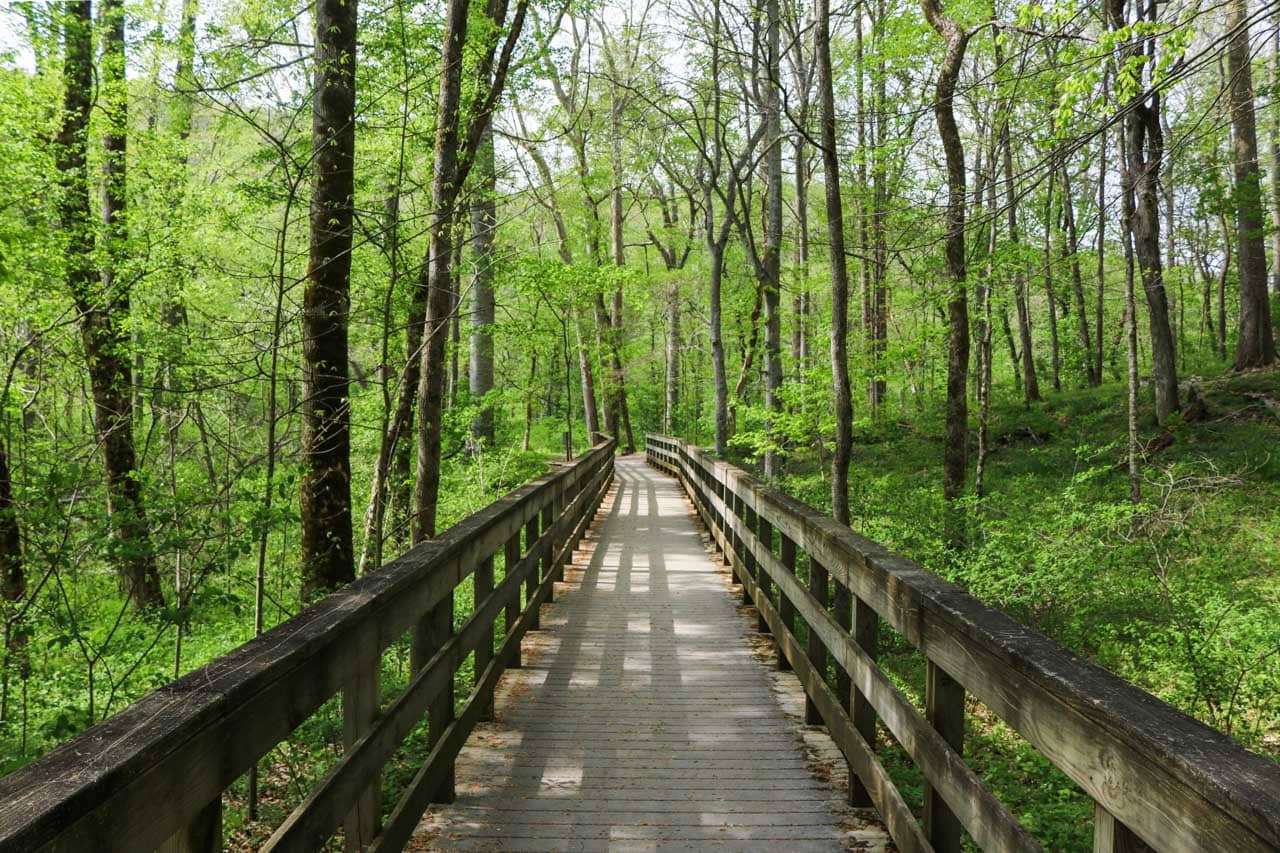
The main attraction of this UNESCO World Heritage-listed national park lies underground—Mammoth Cave is the longest cave on Earth. In addition to spectacular subterranean worlds, there is, however, also plenty of beautiful scenery to enjoy above ground, too.
More than 70 miles of hiking trails crisscross the hills and woods in this Kentucky national park. Dogs are allowed on all of them.
They’re also allowed in the Woodland Cottages, but not at the Hotel Cottages, Sunset Terrace or the Mammoth Cave Lodge.
There is a kennel at the hotel, though, which is extremely convenient if you’d like to go on an underground tour—the absolute highlight in this park—since no pets are allowed inside the caves.
Learn more about the Mammoth Cave National Park pet rules here.
Grand Canyon National Park, Arizona
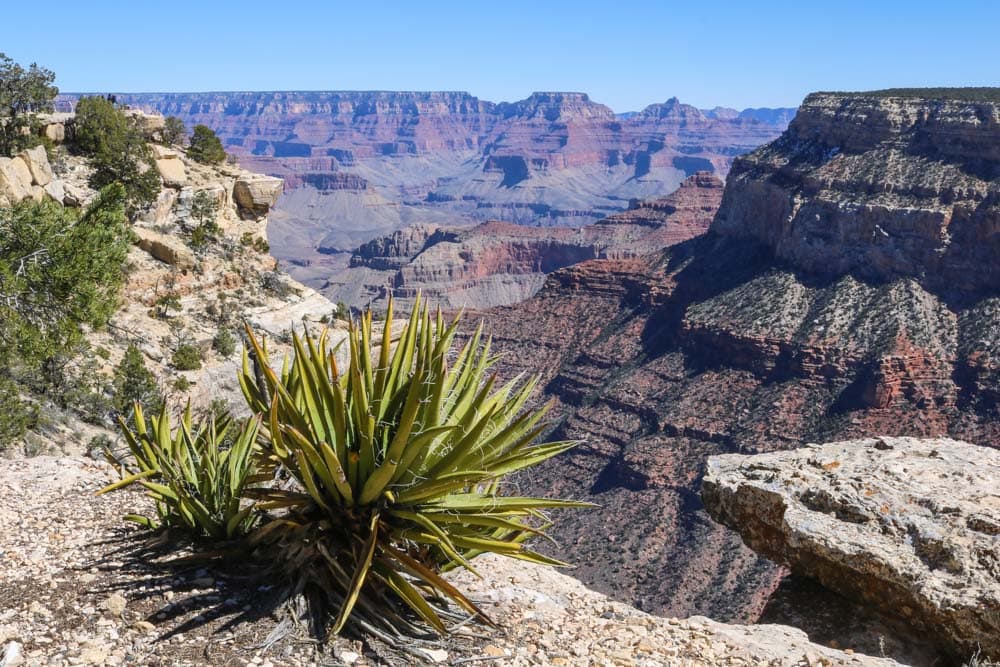
When looking for national parks that allow dogs, you’ll probably be pleased to find out that Grand Canyon National Park is among them. In fact, this extremely popular park is one of the best national parks to visit with your dog.
On the South Rim, the most-visited area in the park, dogs are permitted on all trails above the rim, including the amazing Rim Trail with all its spectacular Grand Canyon overlooks.
Dogs are also allowed at the Mather Campground, Trailer Village and Desert View Campground, as well as in all developed areas.
At the Yavapai Lodge, you’ll find dog-friendly rooms and you can even board your dog at the South Rim Kennel if you’d like to do some more exploring.
Learn more about the Grand Canyon National Park dog policies here.
Hot Springs National Park, Arkansas

One of the few urban national parks in America, Hot Springs National Park is great for dogs. You can walk down Bathhouse Row in downtown Hot Springs with your pet, as well as explore the trails in the hills as long as it’s on a leash that’s no longer than 6 feet.
Dogs are also welcome at the park’s campground, but must wait outside all park buildings.
For your convenience, there are pet waste stations at both ends of Bathhouse Row, which features some of the greatest historic national park buildings in the U.S.
Learn more about the Hot Springs National Park dog rules here.
Great Sand Dunes National Park, Colorado
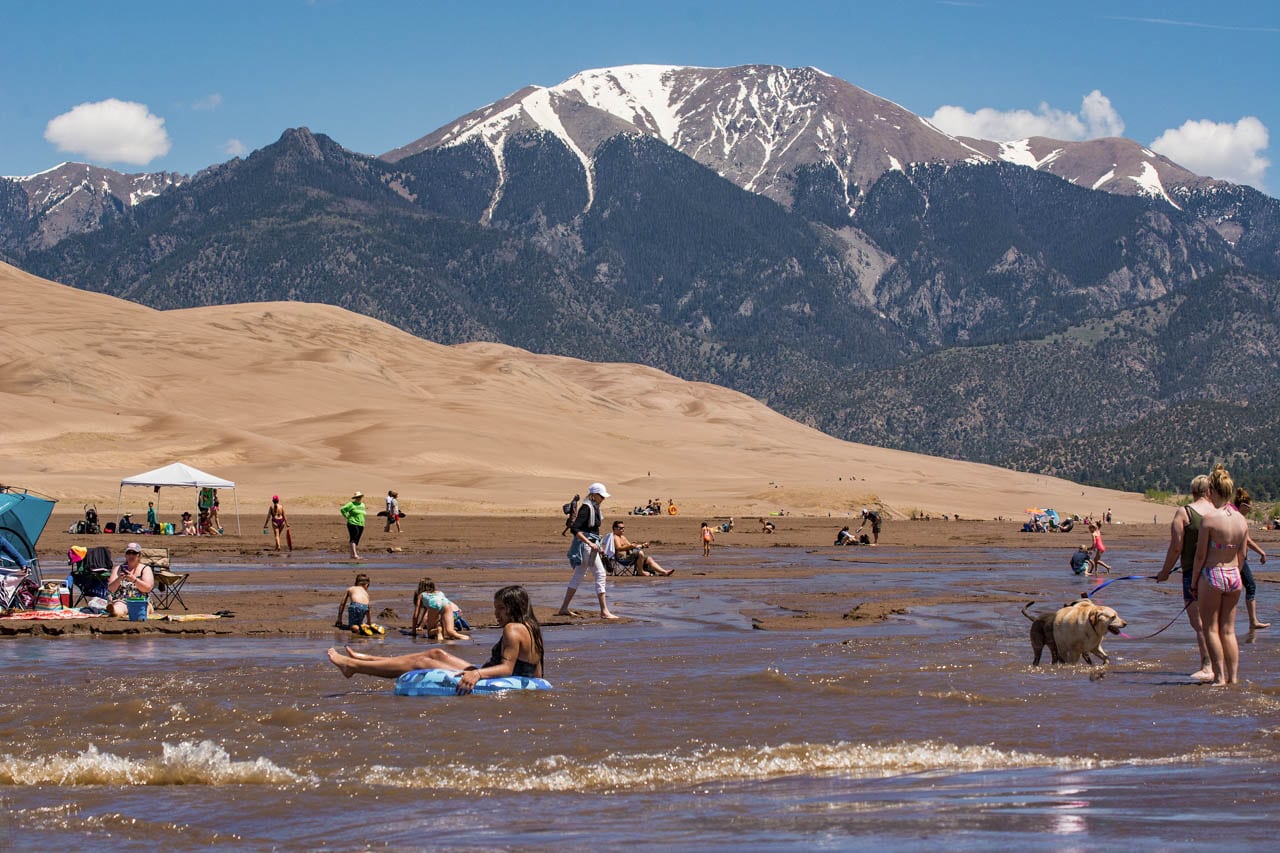
In my opinion one of the most fun national parks in the U.S., Great Sand Dunes National Park has one star attraction—its expansive field of massive sand dunes. Set against the towering Sangre de Cristo Mountains in southern Colorado, these are the highest sand dunes in all of North America.
The park’s home to some nice hiking trails, but the top thing to do here is climbing the sand dunes and sand boarding or sledding back down. You could spend an entire day doing that.
As a dog owner, you’ll be ecstatic to read that you can also take your dog(s) with you in the dunes. Note, however, that they’re only allowed as far as the first dune ridge.
Still, you can explore the park’s main area together with your pet. This includes Medano Creek behind the Visitor Center, the Dunes Overlook Trail and the Piñon Flats Campground.
It’s easy to see why Great Sand Dunes is one of the most dog-friendly national parks.
Learn more about the Great Sand Dunes National Park pet regulations here.
Cuyahoga Valley National Park, Ohio
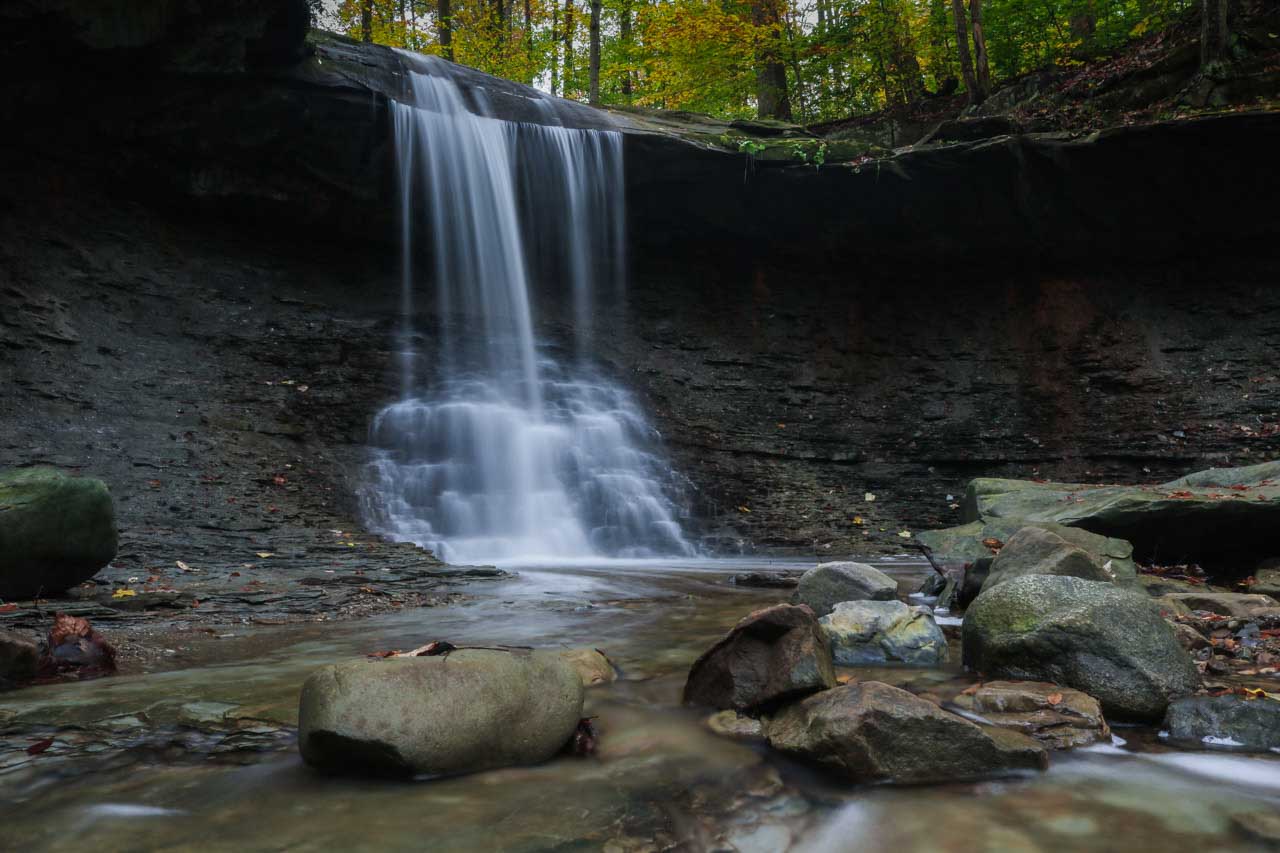
The verdant woodlands, waterfalls and streams of Cuyahoga Valley National Park provide a natural getaway to residents of nearby Akron and Cleveland, as well as visitors. It has one of the most liberal policies for dogs in national parks.
You can enjoy this lush environment together with your dog on more than 110 miles of hiking trails throughout the park.
Twenty miles of the Towpath Trail, one of the main Cuyahoga Valley attractions, are also open to pets. Additionally, dogs are permitted at the Stanford Campground, too.
Dogs aren’t allowed on the Cuyahoga Valley Scenic Railroad train, on the mountain biking trails on the East Rim, or in park buildings.
Note that ticks abound in these woods, so you should always check both yourself and your dog after a day of fun in the forest.
Learn more about the Cuyahoga Valley National Park dog rules here.
Shenandoah National Park, Virginia
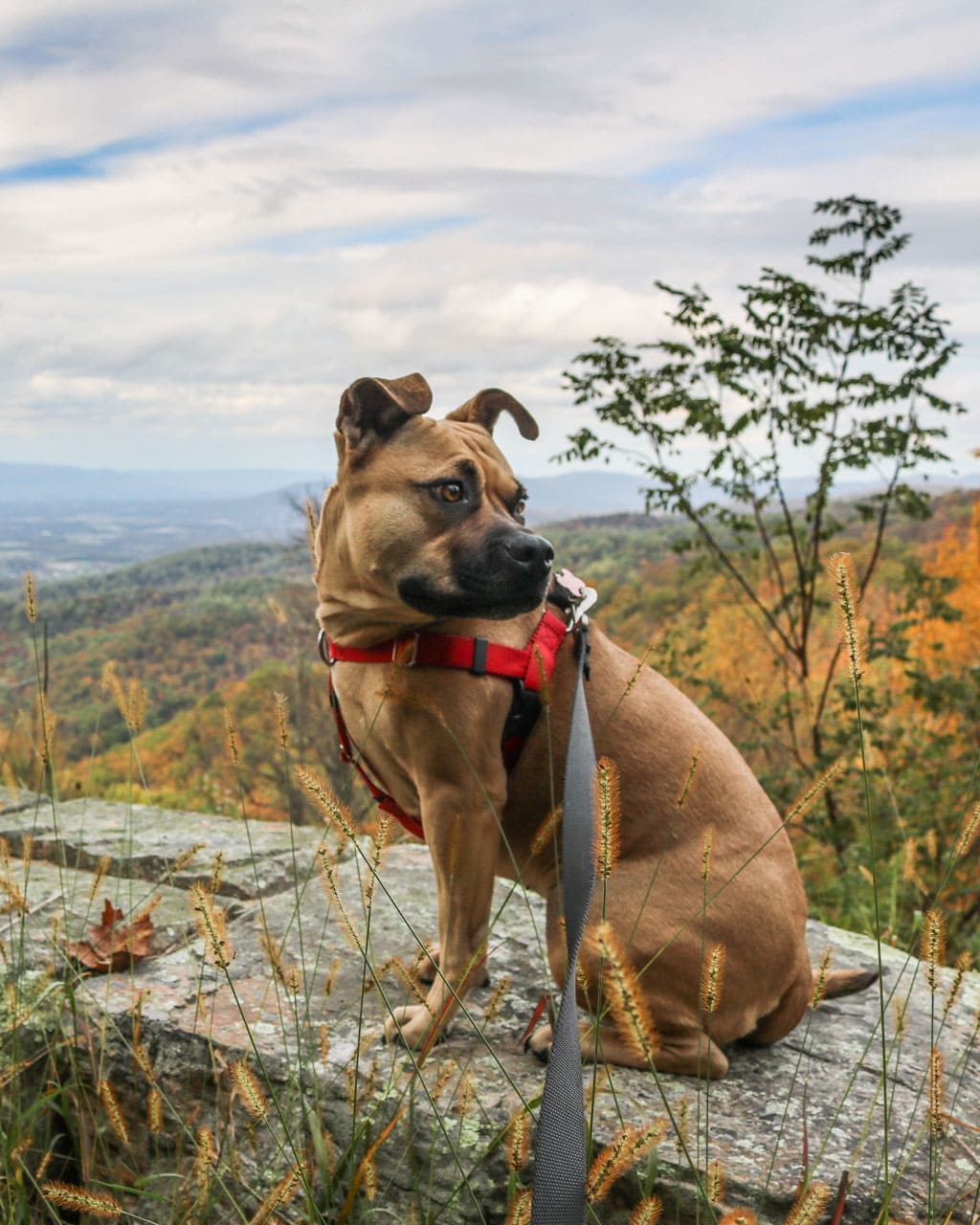
A search for the question ‘are dogs allowed in national parks?’ will result in at least a mention of Shenandoah National Park. This is easily one of the most dog-friendly national parks in America, after all.
Shenandoah is one of the handful of national parks that actually allows pets on most of its trails. Pet-friendly facilities are policies are so abundant here that you can basically explore the entire park with your dog.
From all 70+ overlooks on Skyline Drive to all campgrounds and even dog-friendly lodging, Shenandoah National Park is a dog owner’s paradise.
Of all 500 miles of hiking trails in Shenandoah National Park, only about 20 miles are off limits to pets. This does includes popular trails like Dark Hollow Falls, Bearfence Mountain and Stony Man, the latter two of which are awesome sunset spots in Shenandoah.
All other 480 miles, more or less, are open for exploration with your canine companion.
Learn more about the Shenandoah National Park dog rules here.
North Cascades National Park Service Complex, Washington
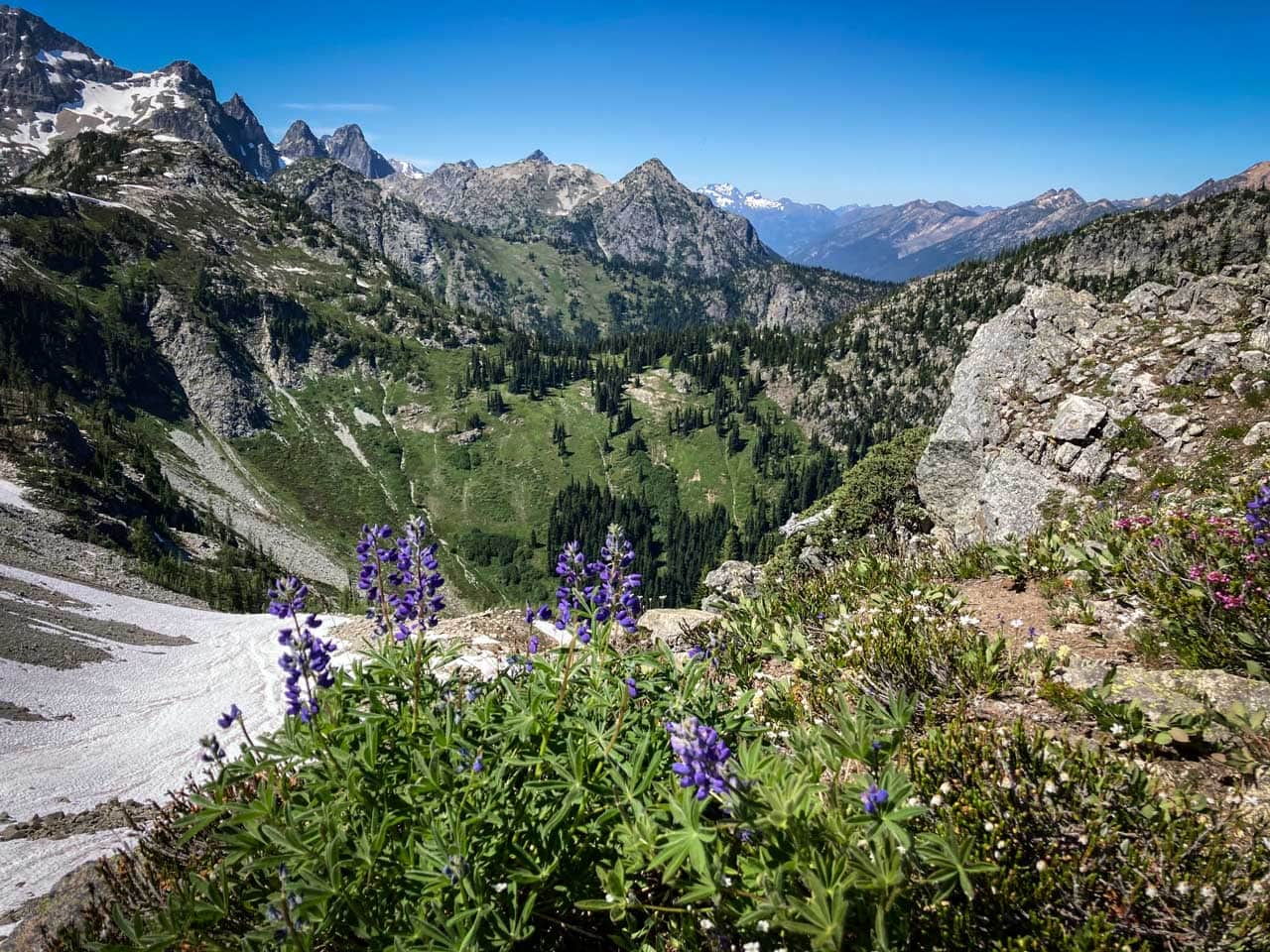
North Cascades National Park in northern Washington encompasses rugged mountain ranges, turquoise lakes and wild rivers. Even though it lies only a short distance to the northeast of Seattle, it’s one of the least-visited American national parks.
North Cascades is also among the least-developed national parks in the U.S., crossed only by scenic Route 20 and home to but a few small towns.
This northern Washington national park complex consists of North Cascades National Park itself, the Ross Lake Recreation Area and the Lake Chelan National Recreation Area.
In the national park, dogs are only allowed on the Pacific Crest Trail and within 50 feet of roads. There are several attractions along Route 20, though!
In the two national recreation areas, on the other hand, dogs are welcome everywhere, provided they’re on a leash.
Learn more about the North Cascades National Park Service Complex dog regulations here.
Petrified Forest National Park, Arizona
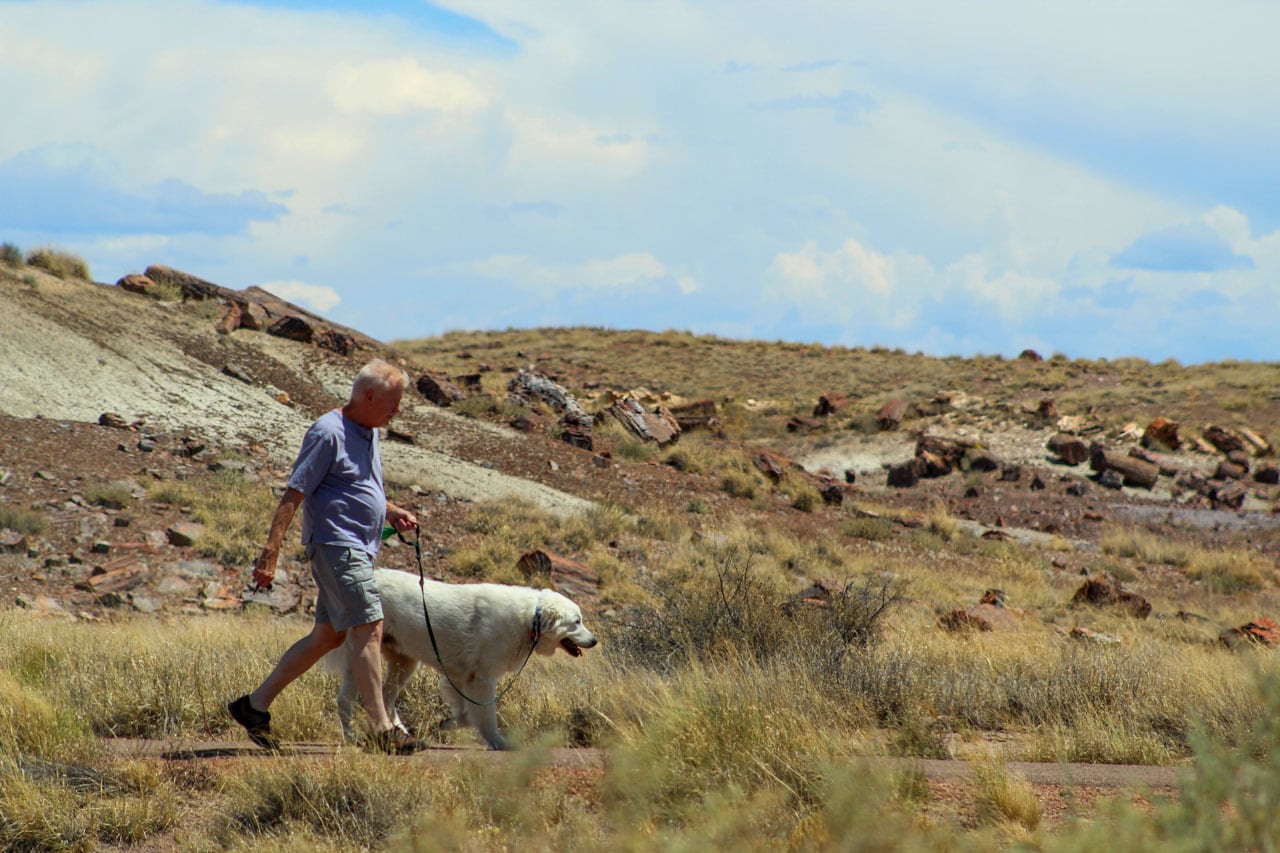
An essential stop on an Arizona national parks road trip, Petrified Forest National Park is exceptional. It protects large areas littered with colorful petrified wood and many other fossils, as well as spectacular desert landscapes.
This is one of the best national parks for dogs for the simple reason that pets are allowed on all paved roads and trails. And many of the short trails in Petrified Forest National Park are actually paved!
Additionally, you can also take your dogs into the officially designated wilderness areas in the park. A backpacking trip into the Painted Desert backcountry, for example, is an unforgettable experience.
Learn more about the Petrified Forest National Park pet rules here.
White Sands National Park, New Mexico
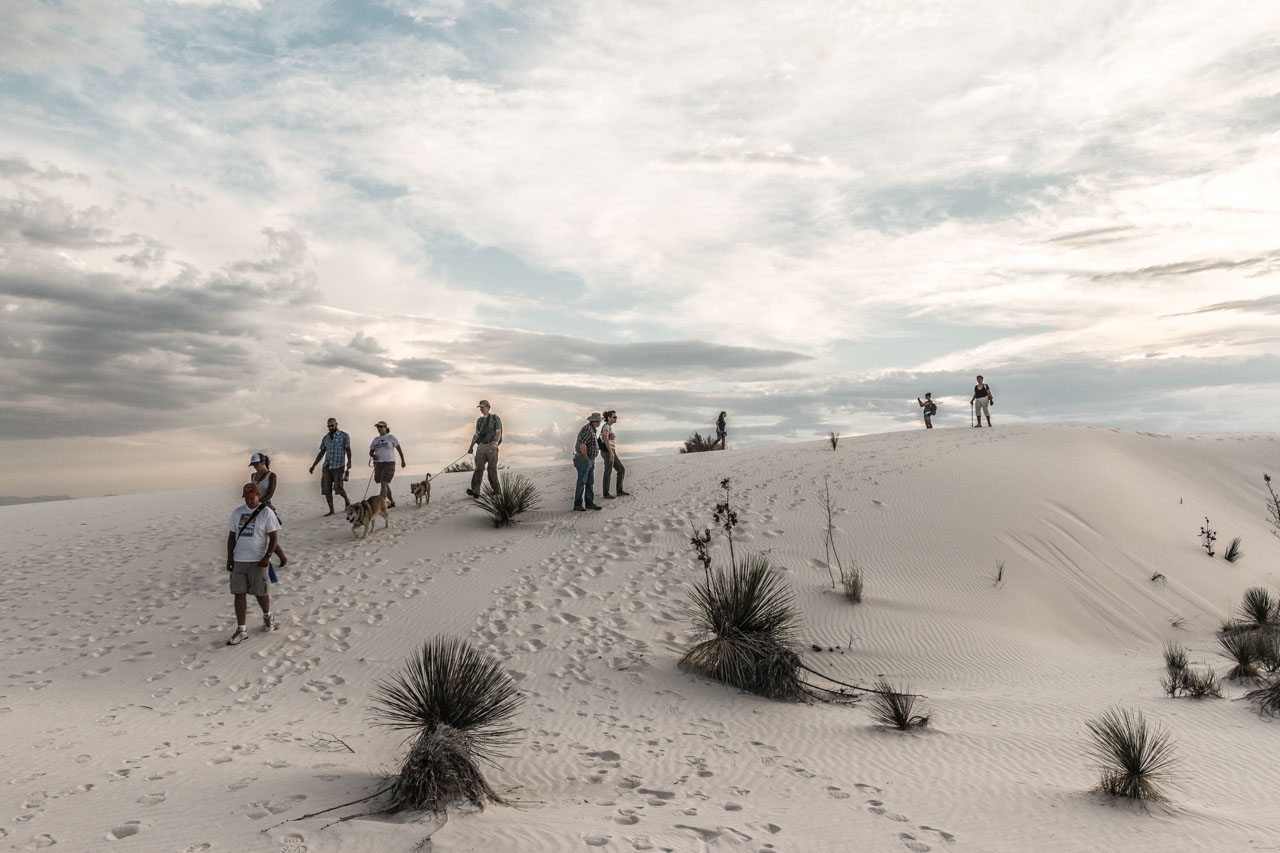
Home to the largest gypsum dune field in the world, White Sands National Park is a giant playground for humans and pets alike. In this huge natural sandbox, you can take your dog with you basically anywhere. The only exceptions are the visitor center and areas closed off for resource protection.
You can go on virtually unlimited adventures in the dunes. If you can go there, your pet can, too. As in other dog-friendly national parks, White Sands National Park does require that pets are on a leash no longer than six feet and are under your physical control at all times.
Additionally, White Sands also has two designated pet walking stations, which have poop pick-up bags. You’ll find both of them just outside the visitor center.
Learn more about the White Sands National Park pet rules.
More Amazing National Parks to Visit With Your Dog
- Indiana Dunes National Park, Indiana
- Death Valley National Park, California
- Yosemite National Park, California
- Badlands National Park, South Dakota
- Wind Cave National Park, South Dakota
National Parks Dog Policy: Be a B.A.R.K. Ranger
All national parks that allow dogs request you follow the four B.A.R.K. principles. This ensures a positive experience for all park visitors, including yourself, other people and your pet.
These are the B.A.R.K. principles.
Bag Your Pet’s Waste
Animal waste introduces non-native elements into an ecosystem.
Always Leash Your Pet
Pets are never allowed off leash in any national park; this is for the protection of both your pet and all wildlife. Follow the applicable hiking etiquette rules and keep all dogs on a leash that’s maximum 6 feet (2 meters) long.
Additionally, you should also never leave your dog unattended. Not even at your campsite. And definitely don’t leave it in your car. All dogs must always be under your control, too.
Respect Wildlife
Never let your dog harass or approach wildlife and nor should you. Train your dog and make sure it listens to you.
This is especially important in stressful situations like black bear, grizzly bear or mountain lion encounters, which can happen in campgrounds and other developed areas in national parks. Dogs could also react to the presence of deer, elk or moose. Additionally, rattlesnake encounters may also startle your dog.
- What to do during a black bear encounter
- What to do during a grizzly bear encounter
- What to do during a mountain lion encounter
- What to do during a rattlesnake encounter
- What to do during a moose encounter
- What to do during an elk encounter
Know Where You Can Go
Always swing by a visitor center and double-check where you can and cannot go with your dogs in national parks.







